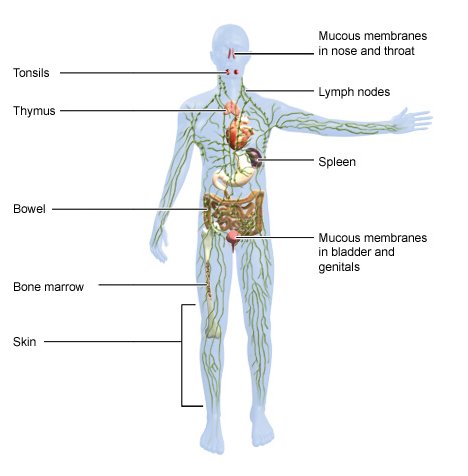Which organs function as barriers?
Your skin and mucous membranes are the first line of defense against germs entering from outside the body. They act as a physical barrier with support from the following:
- Antibacterial substances can kill germs right from the start. A certain enzyme found in saliva, the airways and tear fluid destroys the cell walls of bacteria.
- Mucus in the bronchi helps trap many of the germs we breathe in so they can be moved out of the airways by hair-like structures called cilia.
- Stomach acid stops most of the germs that enter the body in the food we eat.
- Harmless bacteria on our skin and many of the mucous membranes in our body are also a part of the immune system.
The reflexes that cause us to cough and sneeze help us to remove germs from our airways, too.

